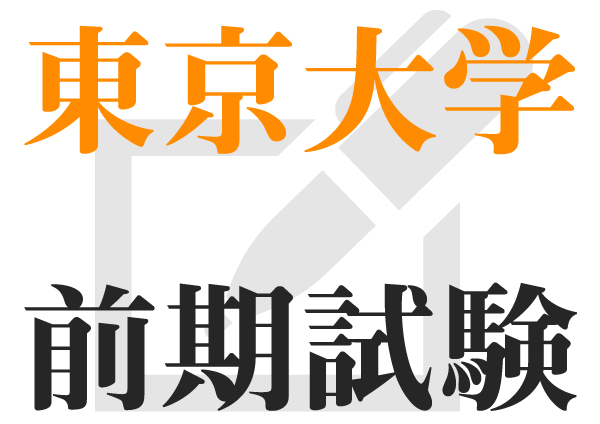【東京大学(東大) 英文要約 添削解説】
東京大学の英語入試では、英語の文章を日本語へ要約する出題があります。問題の傾向としては和文英訳と同じですが、さらに一段階、難しくなっています。勉強の順番としては、和文英訳ができるようになったら、次に英文の要約に挑戦しましょう。
【要約のコツ】
英文要約は、日本語の文章が与えられ、その内容を要約して20words前後の英文に翻訳します。指定の文字数が少ないので、具体例や修辞をうまく省略して、要点だけをまとめるのがコツです。
【東大2019年問題1-A 英文要約】
以下の英文を読み,ヨーロッパで生じたとされる変化の内容を 70~80字の日本語で要約せよ。句読点も字数に含める。
In pre-industrial Europe, child labor was a widespread phenomenon and a significant part of the economic system. Until and during the nineteenth century, children beyond six years of age were required to contribute to society according to their abilities. From about the age of seven, they began a slow entry into the world of work, a world inhabited by both adults and children. The concepts of education, schooling, and protection against hazards were rare or entirely absent. In the early nineteenth century, children were also mostly viewed as the personal property of their parents, with few or no legal rights. Parents, mainly fathers, were given unlimited power and control over them and were allowed to treat them as they wished; physical punishment was almost universal and socially accepted.
This situation began to change as the nineteenth century progressed. Particularly in the half-century from 1870 to 1920, the rights of children in relation to parents, employers, and others expanded in the form of legal protection. Gradually, children began to be perceived as a separate category and not simply as the property of adults. The view that children have no more than economic value began to change and be replaced by the perception that they are a unique group that society has the responsibility to support and protect from the various dangers they face.
Another change in this period was the protection of children from parental abuse and neglect, which were subjected to intense scrutiny and challenged increasingly by government authorities. In 1889, both France and Great Britain passed laws against cruelty to children, including that caused by their parents. The nation became the defender of children's rights. The child's right to protection then led to the right to provision of various sorts, with the national government responsible for providing services. Health care, acceptable housing, and playgrounds - together with freedom from work and access to public schooling - emerged as elements of children's rights.
Children's Rights and Social Work. Hanita Kosher. 2017.
【東大2019年問題1-A 解答】
産業化以前、児童労働は社会現象で、子供は個人の所有物で法的保護はなかった。19世紀末には子供と大人は区別され、残虐行為も含めて法的に保護すべき対象となった。(78文字)
【東大2019年問題1-A 解説】
【文章解説】
ヨーロッパでの子供の社会的な位置付について、歴史に沿って解説した文章です。産業化以前には、子供は法的には大人の所有物で、経済的には労働力でした。第1次産業中心の社会では、子供は労働力として重宝されます。子供への体罰は当然のものとされ、大人と区別して子供を保護すべきという発想はあまりありませんでした。しかし、1870年から1920年の半世紀にかけて、子供が独自の存在であり、保護すべき対象であるとして、社会変化が訪れます。1889年には、フランスとイギリスが子供への残虐行為を法規制しましたが、そこには両親から子供への体罰も含まれていました。子供への国家保護政策として、医療福祉・住宅補助・公園遊具・公教育が整備され、児童の基本的な権利と考えられるようになりました。近年の日本では児童虐待の件数が増加傾向にあり、あらためて歴史のなかでの子供像を確認してきたいです。
【要約テクニック 時系列を読み取る】
産業化以前では、児童労働は社会現象だった。
In pre-industrial Europe, child labor was a widespread phenomenon and a significant part of the economic system
19世紀末から20世紀初頭にかけて、子供の権利保護が拡張される。
from 1870 to 1920, the rights of children in relation to parents, employers, and others expanded in the form of legal protection.
1889年には児童虐待が規制される。
In 1889, both France and Great Britain passed laws against cruelty to children.
【要約テクニック 変化を読み取る】
子供は個人の所有物で、法的保護が与えられなかった。
children were also mostly viewed as the personal property of their parents, with few or no legal rights
子供は大人の所有物ではなく区別された社会集団となる。
children began to be perceived as a separate category and not simply as the property of adults
子供の権利を国家が保護するようになる。
The nation became the defender of children's rights
【要約テクニック 短文を並べる】
産業化以前では、児童労働は社会現象だった。子供は個人の所有物で、法的保護が与えられなかった。
19世紀末から20世紀初頭にかけて、子供の権利保護が拡張される。子供は大人の所有物ではなく区別された社会集団となる。
子供への残虐行為も規制対象となった。子供の権利を国家が保護するようになる。
【要約テクニック 文章を整理して文字数を調整する】
産業化以前、児童労働は社会現象で、子供は個人の所有物で法的保護はなかった。19世紀末には子供と大人は区別され、残虐行為も含めて法的に保護すべき対象となった。(78文字)
【参考文献】
Children's Rights and Social Work. Hanita Kosher. 2017.


【問題1-A 全訳】
産業革命以前のヨーロッパでは、児童労働は広く行き渡った現象で、経済制度の重要な一部分だった。 19世紀までは、6才以上の子どもたちは、能力に応じて社会に貢献することが求められていた。およそ7歳から、彼らは仕事の世界、つまり大人と子供の両方が住む世界へ、ゆっくりと参画していった。教育・学校・補導の概念はまれであるか、まったくなかった。19世紀初頭では、また子どもは、両親の私有財産と見なされ、法的権利をほぼあるいはまったく、持たなかった。両親、主に父親は、無制限の管理権力を与えられ、思い通りに扱うことが許可された。体罰はほぼ普遍的で、社会に受け入れられていた。
この状況は、19世紀が進むにつれて、変化し始めた。特に1870年から1920年までの半世紀で、両親・雇用主・その他に対する子供の権利は、法的保護の形で拡大した。徐々に、子どもたちは大人の財産としてではなく、別分類として認識されるようになった。子どもたちは経済的価値しかないという見方が変わり始め、彼らは独自の集団で、子どもたちが出会うさまざまな危険を、社会は保護支援する責任があるとの見方に置きかえられた。
この期間における別の変化は、親の虐待と育児放棄から、子どもを保護することで、厳しい監視があり、政府によってますます対抗措置が取られていった。 1889年に、フランスとイギリスの両方が、両親からも含めて、子どもへの残虐行為に反対する法律を可決した。国家は子どもの権利の擁護者となった。子どもの保護の権利は、その後、さまざまな受給権利につながり、支援提供する責任は政府にあった。医療保障・公的住宅・公園は、労働からの自由・公教育への参加と合わさり、子どもの権利の要素として浮上した。
【東大2018年問題1-A 英文要約】
( A ) 次の英文の要旨を70から80字の日本語にまとめよ。句読点も字数に含める。
Rumours spread by two different but overlapping processes: popular confirmation and in-group momentum. The first occurs because each of us tends to rely on what others think and do. Once a certain number of people appear to believe a rumour, others will believe it too, unless they have good reason to think it is false. Most rumours involve topics on which people lack direct or personal knowledge, and so most of us often simply trust the crowd. As more people accept the crowd view, the crowd grows larger, creating a real risk that large groups of people will believe rumours even though they are completely false.
In-group momentum refers to the fact that when like-minded people get together, they often end up believing a more extreme version of what they thought before. Suppose that members of a certain group are inclined to accept a rumour about, say, the evil intentions of a certain nation. In all likelihood, they will become more committed to that rumour after they have spoken to each other. Indeed, they may move from being tentative believers to being absolutely certain, even though their only new evidence is what other members of the group believe. Consider the role of the internet here: when people see many tweets or posts from like-minded people, they are strongly inclined to accept a rumour as true.
What can be done to reduce the risk that these two processes will lead us to accept false rumours? The most obvious answer, and the standard one, involves the system of free expression: people should be exposed to balanced information and to corrections from those who know the truth. Freedom usually works, but in some contexts it is an incomplete remedy. People do not process information in a neutral way, and emotions often get in the way of truth. People take in new information in a very uneven way, and those who have accepted false rumours do not easily give up their beliefs, especially when there are strong emotional commitments involved. It can be extremely hard to change what people think, even by presenting them with facts.
【東大2018年問題1-A 英文要約 解答】
間違った噂は2つの過程から広がる。有名の肯定は大勢が知っているだけで、集団の勢力は同意見の人間と話すだけで、噂を信じこむ。間違えないためには表現の自由が大事だ。(80文字)
【東大2018年問題1-A 英文要約 解説】
【要点をまとめる】
今回の要点は以下の4つです。
1:間違った噂は2つの過程から広がる。
2:有名の肯定(popular confirmation)で人は有名な噂を信じこむ。
3:集団の勢力(In-group momentum)で人は同じ意見を交わすだけで噂を信じこむ。
4:間違った噂を信じこまないために自由な表現に触れる。
【社会心理学】
人間が、個人でいる場合と集団でいる場合で、異なる心理の動きがあることは、社会心理学で研究されています。今回の文章は、人間集団がどのように間違った噂を信じてしまうのか、その過程を説明しています。他にも、犯罪・流行・マーケティング・経済恐慌などは、集団としての人間心理を扱いますので、理解するために、社会心理学の知識が役立ちます。
【東大2018年問題1-A 英文要約 全訳】
噂は、2つの異なるが重複する過程により広がる。有名の肯定と集団の勢力だ。最初のものが起こるのは、私たち一人ひとりが、他人の思考や行動に頼る傾向があるからだ。特定の数の人間が噂を信じているようだと、他人はそれが嘘だと思う正当な理由がない限り、それを信じるだろう。ほとんどの噂には、人々が直接的または個人的な知識が不足している題材が含まれているので、私たちのほとんどは、単純に群衆を信頼してしまう。より多くの人々が群集の見解を受け入れるにつれて、群衆は大きくなり、大きな群衆の人々が、完全に間違っていても噂を信じてしまう真の危険を生み出す。
集団の勢力は、同じような考え方の人々が集まったとき、彼らは以前に思っていたものよりも極端なものを信じることになる事実を指す。ある集団の一員が、例えば、ある国家に悪意があるという噂を信じたがっている。おそらく、彼らはお互いに話をした後、その噂をもっと信じるようになるでしょう。実際、唯一の証拠が集団の他の一員が信じていることだけにもかかわらず、暫定的な信者から絶対的な確信へと変化するかもしれません。ここでインターネットの役割を考えてみよう。人々が同じような考えを持つ人々からの多くのつぶやきや投稿を見ると、彼らは本当に噂を受け入れやすくなる。
これらの2つの過程により間違った噂を受け入れる危険性を減らすためには、何ができるだろうか。最も明白な答え、そして標準的な答えは、表現の自由な仕組みを伴う。人々は、バランスの取れた情報と、真実を知っている人からの訂正に、触れられるべきです。表現の自由は通常うまくいくが、状況によっては不完全な救済策だ。人々は中立的な方法で情報を処理せず、感情はしばしば真実を邪魔する。人々は非常に不公平な方法で新しい情報を取りこみ、誤った噂を受け入れた人は、特に感情的な結びつきが強いときには、簡単に信念を放棄しない。事実を提示しても、人々の考えを変えるのは非常に難しいことだ。



質問と回答